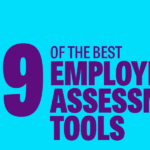How to adapt your Learning and Development (L&D) strategy for a modern audience
At Let’s Talk Talent (LTT), we don’t believe that when it comes to learning, baby boomers, millennials and zoomers are really that different from one another. Most employees (whatever their age) have a deep desire to develop new skills and challenge themselves daily. However, the learning landscape itself is indeed changing due to many external factors, from technology to the new hybrid reality and the accessibility of content.
So how can your learning and development strategy keep up when the nine-to-five workday is becoming more fluid and learning routines are adapting to this. Communication channels are evolving as we are increasingly getting used to finding instant answers to all our questions at the click of a button, whether through Google or YouTube searches. Which is great, of course. But how can HR professionals focus their talent’s L&D efforts on the skills the business actually needs in order to improve organisational performance? Especially considering the sea of available information and the diverse interests of your talent pool?
Modern learning: competing with the likes of Google
It is indeed one thing to provide relevant content aimed at filling key skill gaps within your business, but how can you make it appealing enough for staff to select your material over everything else available? In short, when it comes to L&D, how can you compete against Google? This may seem like an insurmountable challenge, but we have a few tricks up our sleeves.
So below we’ve compiled a list of seven ways for HR teams to adapt their organisational content to the modern workforce so that your business’ L&D offering truly hits the mark. Before we get started though, let’s take a look at the characteristics of the modern learner.
Download our free L&D strategy whitepaper for extra tips.
The top 4 traits of the modern learner
Again, it’s important to mention that the modern learner isn’t necessarily a member of the millennial or zoomer tribe. They are a product of the current work environment, which has created a new learning landscape that transcends the usual daytime classroom-based courses. This phenomenon has generated a modern workforce that shares the following traits:
- Trait 1: they are time-poor and easily distracted
Employees are constantly interrupted, through a multitude of channels. The remote working context has led to tools such as Teams and Zoom being permanently adopted by businesses, and the new hybrid working reality has brought back in-person meetings and conversations into the mix. This has made it extremely difficult for staff to focus on long learning courses. And while it may seem like this is simply due to a distracted mindset, let’s remember that the Great Resignation has a lot to answer for. Many people have left their current positions to find better-suited roles, work-life balances or careers. And the loyal employees left behind are often the ones trying to pick up the slack from unfilled positions.
- Trait 2: when they want something, they want it right now
And who can blame them, when tools such as Google and YouTube can provide answers and relevant content within seconds?
- Trait 3: they want to choose when and where they learn
This could be on their mobile device, listening to a podcast on the car ride to work, reading a book on the bus or watching a microcapsule at work between meetings.
- Trait 4: they are keen to learn new skills
The channels, types of material and content formats may have changed, but the desire to acquire new skills and deepen existing knowledge remains.
So how can you adapt your L&D offering based on these findings to ensure you are taking the needs of a truly modern learning audience into account?
7 tips to create an L&D strategy that appeals to the modern learner
1. Get to know your people’s learning preferences
As L&D professionals, your first step should be to get to know your people and their learning preferences. You may discover trends based on demographics (including age or seniority), roles (such as leadership, management or technical specialists) or sectors (such as technology or finance). Make sure you gather data on your people’s wants and needs in an empirical way, without making initial assumptions.
2. Provide a variety of L&D content
Offer several options in terms of format, length and topics, and set up specific KPIs to measure just how popular each option truly is. Course correct along the way and utilise user feedback to gradually create content that fits learner preferences, and surface new topics based on your findings. Don’t be afraid to try new things and innovate, but if you are testing something new, test one variable at a time.
Read about how we created the Netflix of learning for Harper Collins UK.
3. Repurpose your L&D resources
This is a great way to offer a variety of materials and reach a wider audience. For example, after commissioning the creation of a video, turn your main deliverable into a series of texts or audio bites. In addition to saving on budget, this will allow you to reach a wider range of learner types as well as give you added reasons to contact staff every week with new resources available. Repurposing content also increases the chances of your material landing at the right moment in the employee’s learning journey.
4. Create evergreen content
Content that remains relevant over time and brings people back over and over again is obviously great from an ROI point of view. But there are many other advantages to producing evergreen content: it presents a great opportunity for SEO optimisation, making it easier for new users to find your content through Google or YouTube. It can also be shared and reshared through your social media platforms or internal comms channels as it remains pertinent to learners. Top tip: don’t just leave your content there as it could easily age. Schedule a review at regular intervals in case a little spruce up is required.
5. Make your content as accessible
Modern learners will select learning material when they are ready to consume it. Ensuring your content is readily available will go a long way towards enticing your talent pool to focus on resources you curated before opening up their searches to other channels. Create video, audio and visual content that can be viewed on phone screens. Enable staff to bookmark items, pause and resume viewing, or suggest similar or related resources. Users should be able to get in easily, get out if they need to, and come back at a time of their choosing.
6. Build L&D into every stage of your Employee Experience (EE)
Your L&D content will come in handy throughout every stage of the EE, from onboarding to career development, from performance management to succession planning. Integrate learning a part of each one of these key moments. Proactively presenting bite size pieces or information nuggets at the exact right time will increase takeup from busy and distracted employees who may not otherwise think to look for learning opportunities.
7. Use marketing principles to promote your L&D offering
Once you’ve designed a library of content that fits the needs of your modern learners, establish a launch plan that takes your audience into account. Keep promoting new resources, and resurface older topics from time to time to check how relevant they are. And most important of all, measure everything! Setting up KPIs will allow you to figure out what works for your particular talent pool.
Taking the needs of the modern learner into account
Businesses are no longer competing against other companies’ L&D offerings for learners’ attention, but against every major information provider out there. But this doesn’t mean you have to remove everything you have and start from scratch. Just like everything else, it’s about understanding your people and figuring out what works for them.
Start with repurposing, reviewing, reusing and overall making your existing content appealing for the modern learning audience. In short, ask yourself how you could better reach a talent pool that is increasingly busy, distracted, impatient… But also dedicated to learning more and becoming the best version of themselves they can be. Fostering a culture of learning within your organisation means looking for opportunities to integrate bite size learning moments throughout the employee’s lifecycle, so go for little improvements at a time over big sweeping changes and you should start to see amazing results, fairly quickly.
If you have any questions about how to make your L&D offering the best it can be, book a call with our team to discuss your needs.
Read more of our thinking, have a look at our learning and development strategy service page, or get further ahead by downloading our free L&D whitepaper here.
Related Learning & Development resources that you might find useful:
- Your recipe for a successful L&D Strategy [Free Whitepaper]
- How to use virtual coaching as part of your L&D kitbag [Blog Post]
- Creating the Netflix of learning and development for employees [Blog Post Case Study]
- How L&D Can Improve Your Employee Experience [Blog Post]
- What is L&D? And why is it important? [Blog Post]
- The 27 best online L&D tools [Blog Post]
- What is L&D? [YouTube]
- Make the most of Learning at Work Week [Blog Post]
- Why Learning at Work Week should be top of your L&D priority list [Blog Post]
- 10 ways to modernise your Learning and Development strategy for the modern workforce [Blog Post]




